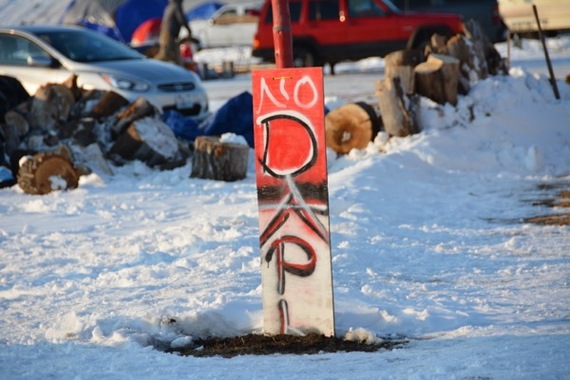Here is the full release.
Today, the Army informed the Standing Rock Sioux Tribe, Energy Transfer Partners, and Dakota Access, LLC, that it has completed the review that it launched on September 9, 2016.
The Department of the Army will not approve an easement that would allow the proposed Dakota Access Pipeline to cross under Lake Oahe in North Dakota, the Army's Assistant Secretary for Civil Works announced today.
The following statement was released by Standing Rock Sioux Tribal Chairman Dave Archambault II.
"Today, the U.S. Army Corps of Engineers announced that it will not be granting the easement to cross Lake Oahe for the proposed Dakota Access Pipeline. Instead, the Corps will be undertaking an environmental impact statement to look at possible alternative routes. We wholeheartedly support the decision of the administration and commend with the utmost gratitude the courage it took on the part of President Obama, the Army Corps, the Department of Justice and the Department of the Interior to take steps to correct the course of history and to do the right thing."
Jo-Ellen Darcy said she based her decision on a need to explore alternate routes for the Dakota Access Pipeline crossing. Her office had announced on November 14, 2016 that it was delaying the decision on the easement to allow for discussions with the Standing Rock Sioux Tribe, whose reservation lies 0.5 miles south of the proposed crossing. Tribal officials have expressed repeated concerns over the risk that a pipeline rupture or spill could pose to its water supply and treaty rights.
"Although we have had continuing discussion and exchanges of new information with the Standing Rock Sioux and Dakota Access, it's clear that there's more work to do," Darcy said. "The best way to complete that work responsibly and expeditiously is to explore alternate routes for the pipeline crossing."
Darcy said that the consideration of alternative routes would be best accomplished through an Environmental Impact Statement with full public input and analysis.
The Dakota Access Pipeline is an approximately 1,172 mile pipeline that would connect the Bakken and Three Forks oil production areas in North Dakota to an existing crude oil terminal near Pakota, Illinois.
It remains to be seen how all of this will play out, but today is a day for celebration at Oceti Sakowin and on the Cheyenne River Sioux Reservation.

